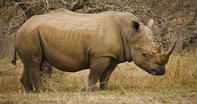
White Rhino
Name
White or square-lipped rhinoceros (Ceratotherium simum)
Appearance
The white rhino is the world’s third largest land mammal. Bulls measure 1.8 m at the shoulders with a mass of up to 2000 kg, and cows can weigh 1800 kg. They are huge, robust and not as aggressive in temperament as the black rhino. They are grey in colour and their skin is nearly hairless. They carry a hump on their necks and have a broad, square-shaped mouth. The white rhino’s horns are, in fact, densely packed fibres and therefore not technically horns. The penis is pointed backwards and the testes are located on the abdomen.
White Rhino Diet
The white rhino only grazes, preferring short grass. It will feed on longer grass when short grass is unavailable. It takes its food between the upper and lower lips, its broad mouth allowing it to take in an adequate amount of grass with each bite.
White Rhino Breeding
After a gestation period of 16 months, a single calf is born. Calves stay with their mothers until the age of 2-3 years, until her next calf is born. The white rhino has no specific breeding period, although mating occurs predominantly during the wet season and birthing at the start of the dry season in South Africa. Copulation can last longer than an hour. At the age of eight years old, cows will start breeding. Bulls are sexually mature only at 10-12 years old.
White Rhino Behaviour
Dominant bulls are territorial and defend their area of land covering 2-5 square kilometers. The bull will, however, share his territory with one or more lower-ranking bulls. Cows’ ranges can overlap many bulls’ territories. A territorial bull will try to limit a cow receptive to mating to his area of land, and will be with her 5-10 days before mating. The white rhino can run particularly fast despite its short and heavy legs, but only for short distances.
Where They are Found
The white rhino used to be widely distributed throughout the South African bush, but was decimated during the 19th by hunters, excluding the Umfolozi region in KwaZulu-Natal. It has been reintroduced to regions it occupied historically with great success, but is still threatened by poachers.
Field Notes
There is little difference in colour between the white and black rhino. The name ‘white rhino’ derives from the Dutch word "wyd" meaning wide, referring to its mouth. This was thought to mean white. The black rhino was a greater tourist attraction than the white, being a member of the Big 5, but due to its scarcity, both species are now popular sightings for tourists in South Africa. The white rhino is slightly larger than the black rhino.
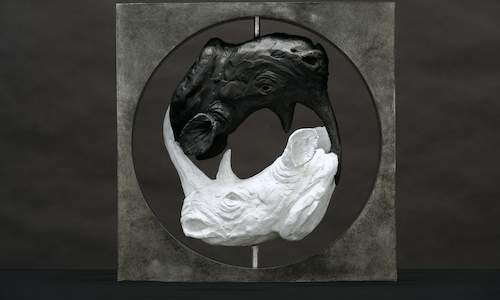
Harness ancient African wisdom with this glorious rhino sculpture....
more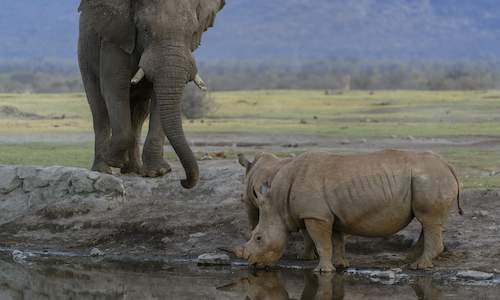
White rhino are the second largest land mammals on earth and as such enjoy a position amongst the ‘Big 5’ – historically those animals...
more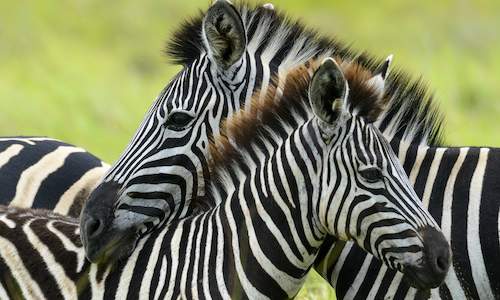
Learning about the mammals of South Africa is now so much easier for all South Africans - SouthAfrica.co.za is an excellent source of inform...
more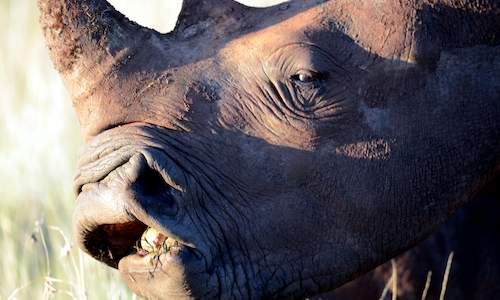
White rhino have massive necks with a large nuchal hump over the shoulders....
more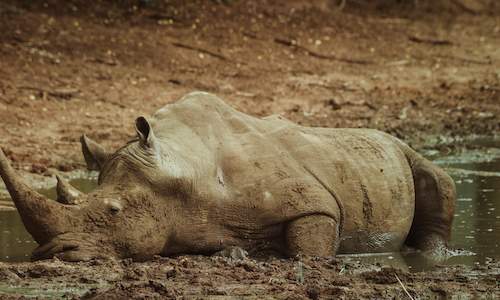
White rhino are fond of wallowing in mud in order to help them cope with excessive summer heat conditions....
more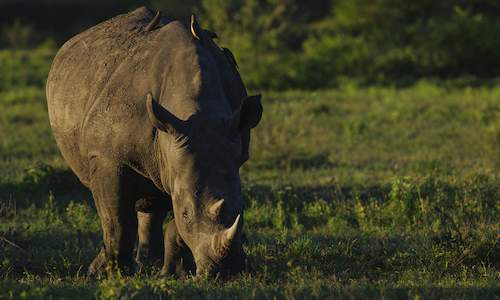
White rhino have large elongated heads that terminate in a set of broad, square-shaped lips....
more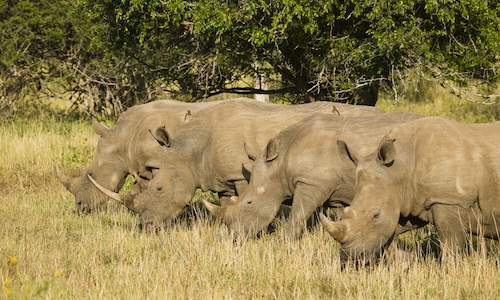
White rhino females are fairly gregarious, live with others of their own kind, and it is quite unusual to find a cow alone....
more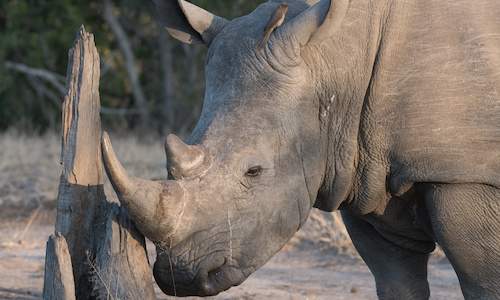
To demarcate his territory a bull white rhino employs a number of visual and olfactory signals. Patrols along well-used paths take place to ...
more